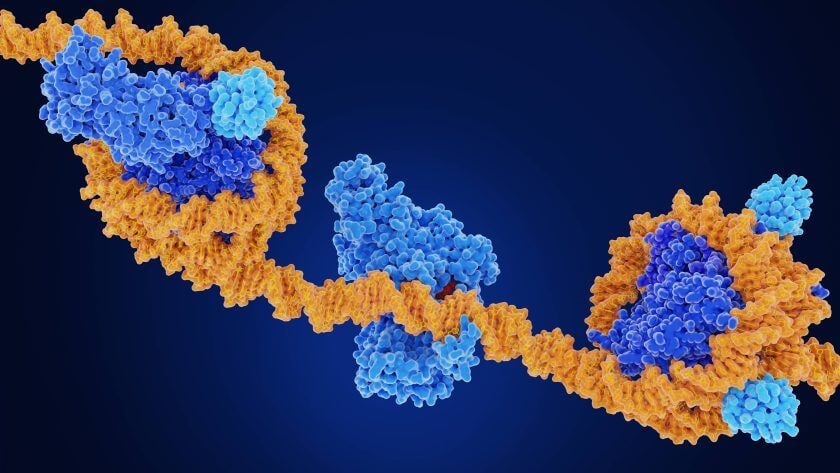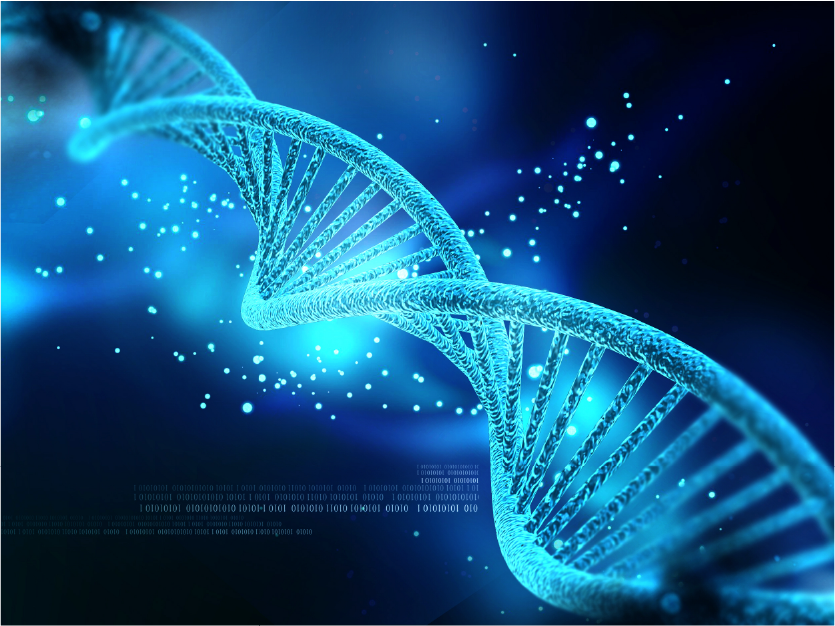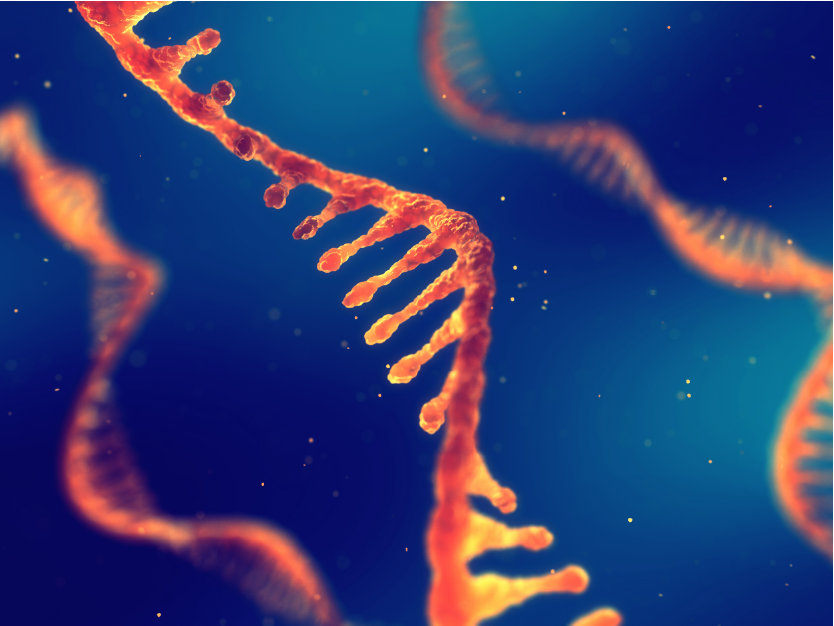Foreword
To start, put yourself in a hypothetical situation: you have an identical twin brother who was secretly transferred to another family when you were less than a year old. His new family was poor, and your family was rich and therefore the environment in which you grew up was much better than his. After 50 years, by chance, you both happen to meet and it turns out that you look quite different from one another and are in different states of health; he is short and is suffering from heart disease, while you are tall, healthy, and are training to run a marathon. So, what was it that made you two so different, in light of the fact that your genetic materials are completely identical?
You might posit that it is because of the environment. It is true that the environment can directly shape lots of our phenotypes (e.g. your hairstyle), but how does it affect many genetically encoded phenotypes (e.g. your height)? What are the mechanisms that link the internal and the external? Here, we introduce epigenetics – the study of changes in the regulation of gene activity and expression that are not dependent on gene DNA sequence.
Storing DNA in a Cell - "Putting an elephant into a fridge":
Before we dive into our discussion about epigenetics, we should first address why cells need epigenetic mechanisms to regulate gene expression. Our genetic materials are abundant—each human cell contains around six linear feet of DNA. To package such long DNA into a cell nucleus whose diameter is only 5-20 μm, linear DNA transformation into a compact form is required. The machinery that makes this transformation happen is called a histone. Each histone is comprised of two subunits from four types of histone proteins: H2A, H2B, H3, and H4. All of these subunits have additional histone tails, which can accommodate several histone modifications and play a critical role in histone dynamics. Since histones carry positive charges, and DNA molecules carry negative charges, each histone can have around 150 bp of DNA wrapped around itself. This complex that contains one histone and wrapping DNA is called a nucleosome, and it forms the basic unit of a chromatin.
While histones certainly solve the packaging problem, it poses another problem of accessibility: Some DNA fragments that tightly coil around histones but contain functional genes are not accessible by transcription factors. This inaccessibility can prove to be lethal if these functional genes are vital. Therefore, mechanisms such as epigenetics that can control the accessibility of DNA are crucial to maintaining the normal function of transcription factors.
Epigenetics:
The modern definition of epigenetics is the study of changes in the regulation of gene activity and expression that are not dependent on gene DNA sequence. This means that while all epigenetic mechanisms are not genetically encoded, some of them are inheritable. Currently, at least three systems are considered to initiate and sustain epigenetic changes: DNA methylation, histone modification, and RNA interference. Let’s dive into more details about each mechanism, and learn how we can study them in a lab setting.
1. DNA Methylation:
The first system, DNA methylation, refers to the addition of a methyl group to the 5’ carbon of a cytosine ring. Of note, it only affects cytosine when it is followed by guanine. This is the most common, and only inheritable mechanism among the three systems listed above. Methylated DNA will coil more tightly around the histones, and therefore will not be accessible to transcriptional factors. As a result, genes of interest will be repressed. Here are two methods to study DNA methylation, according to researchers’ needs:
Bisulfite conversion:
This method is used for detecting the location of these methylated-cytosines on the DNA. The method uses sodium bisulfite to deaminate unmethylated-cytosines into uracils and is followed by next-generation sequencing (NGS). Since normal DNA does not contain uracil, the positions of uracils shown in the sequencing results indicate the positions of unmethylated-cytosines in the original DNA fragments. Similarly, cytosines shown in the sequencing results are methylated in the original fragments.
ELISA:
If we only want to measure the percentage of methylated cytosines in the DNA, we can use an ELISA method. This method requires a primary antibody that can specifically bind to the methylated cytosine, as well as a secondary antibody with horseradish peroxidase (HRP). Once the ELISA completes, color changes catalyzed by HRP can be detected with further calculations to establish a percentage. One of our popular ELISA kits recommended for measuring DNA methylation is (click the catalog number to browse the product page):
|
Category |
Target Name |
Catalog No. |
Product Name |
Sensitivity |
|
DNA methylation ELISA kit |
Methylated CpG |
Human Methyl CpG Binding Protein 2 ELISA Kit (MECP2)
|
0.054 ng/mL |
2. Histone modifications:
Unlike DNA methylation, histone modifications are mechanisms that add functional groups to the histone proteins instead of DNA molecules. There are four well-known types of modifications: Methylation, acetylation, phosphorylation, and ubiquitination. The effects of these four mechanisms are shown below:
|
Type |
Effect |
Example |
|
DNA methylation |
Activation/Repression |
Activation: H3K4me1 Repression: H3K9me1 |
|
DNA acetylation |
Activation |
H3K9ac |
|
DNA phosphorylation |
Activation |
H3S10p |
|
DNA ubiquitination |
Activation/Repression |
Activation: H2BK123ub Repression: H2AK119ub |
To study histone modifications, there are two commonly used methods:
Western Blot:
If we are interested in the types and abundances of certain modifications, western blotting is the most suitable choice. This method requires an antibody that can bind to the modification of interest.
ChiP-seq:
As we previously described, histones are wrapped by DNA. It then follows that we should determine which part of the DNA is doing the wrapping. So, if we are interested in determining the genomic location of histones, we can perform chromatin immunoprecipitation sequencing (ChiP-seq), a method characterizing interactions between DNA and DNA-binding proteins. This method also requires an antibody that can bind to our protein of interest.
Some of our antibodies that are compatible with both western blot and ChiP-seq methods are shown below (click the catalog number to browse the product page):
|
Category |
Target Name |
Catalog No. |
Product Name |
Applications |
|
Protein for detecting histone modifications |
H3K27me3 |
TriMethyl-Histone H3-K27 Rabbit pAb |
WB, IHC, IF, IP, CHiP, CHiP-seq |
|
|
H3K4me3 |
TriMethyl-Histone H3-K4 Rabbit pAb |
WB, IHC, IF, IP, CHiP, CHiP-seq |
||
|
H3K9ac |
Acetyl-Histone H3-K9 Rabbit pAb |
WB, IHC, IF, IP, CHiP, CHiP-seq |
||
|
H3K9me3 |
TriMethyl-Histone H3-K9 Rabbit pAb |
WB, IHC, IF, IP, CHiP, CHiP-seq |
||
|
H3K27Ac |
Acetyl-Histone H3-K27 Rabbit pAb |
WB, IHC, IF, IP, CHiP, CHiP-seq |
3. RNA interference:
RNA interference (RNAi) is the process where RNA molecules regulate gene expressions. The two key molecules in this process are microRNA(miRNA) and small-interfering RNA (siRNA). Both molecules act to repress the expression of genes, in a process known as gene silencing. RNAi has become a powerful tool to study the functions of certain genes without deleting them from the genome. Western blot and RT-qPCR are sometimes required to validate whether the gene has been successfully knocked down.
References:
Lammerding, J. (2011a). Mechanics of the Nucleus. Comprehensive Physiology. https://doi.org/10.1002/cphy.c100038
Meas, R., & Mao, P. (2015). Histone ubiquitylation and its roles in transcription and DNA damage response. DNA Repair, 36, 36–42. https://doi.org/10.1016/j.dnarep.2015.09.016
Nam, S. M., & Cho, K.-O. . (2017). Chapter 12 - The role of epigenetics in the pathophysiology of epilepsy (D. H. Yasui, J. Peedicayil, & D. R. Grayson, Eds.). ScienceDirect; Academic Press. https://www.sciencedirect.com/science/article/pii/B9780128002261000125
Griffiths, A. J. F., Miller, J. H., Suzuki, D. T., Lewontin, R. C., Gelbart, W. M., (2000). An introduction to genetic analysis. W. H. Freeman and Company.
Epigenetics and the influence of our genes | Courtney Griffins | TEDxOU. (2012). www.youtube.com. Retrieved March 30, 2021, from https://www.youtube.com/watch?v=JTBg6hqeuTg&t=555s
Epigenetics 3: Histone Modification and ChIP-seq. (n.d.). www.youtube.com. Retrieved March 30, 2021, from https://www.youtube.com/watch?v=4NRkoj1WFyU&t=310s



